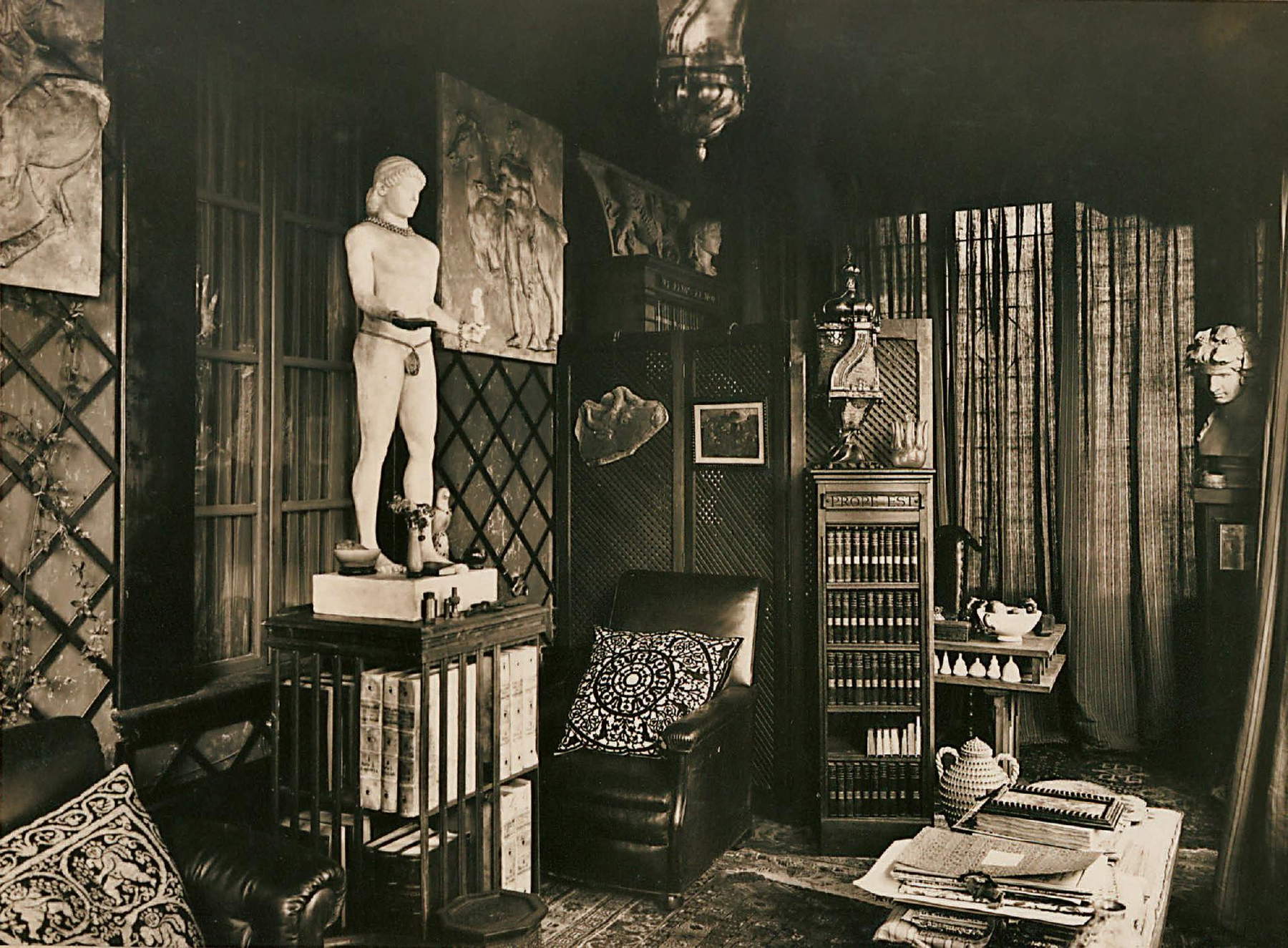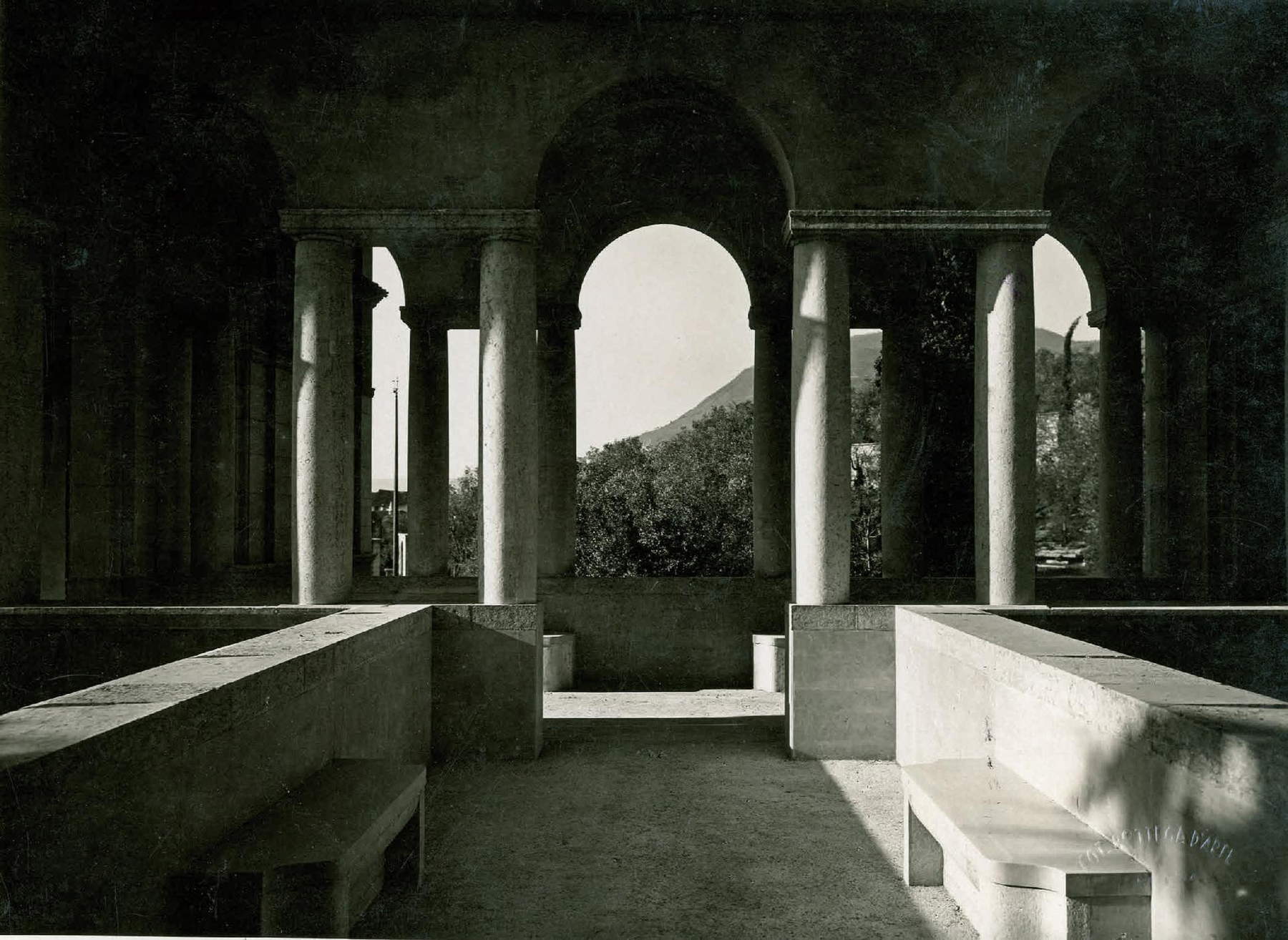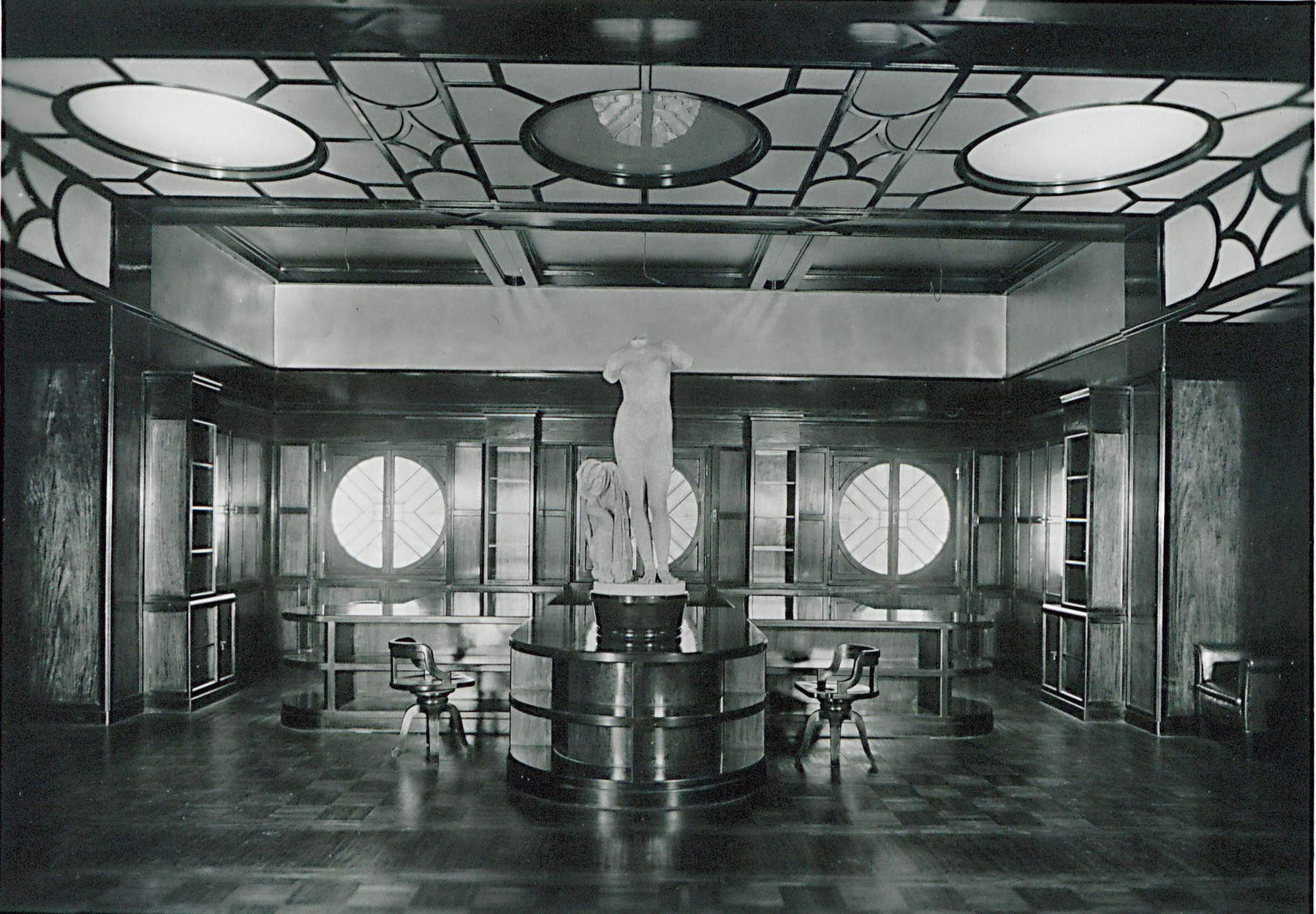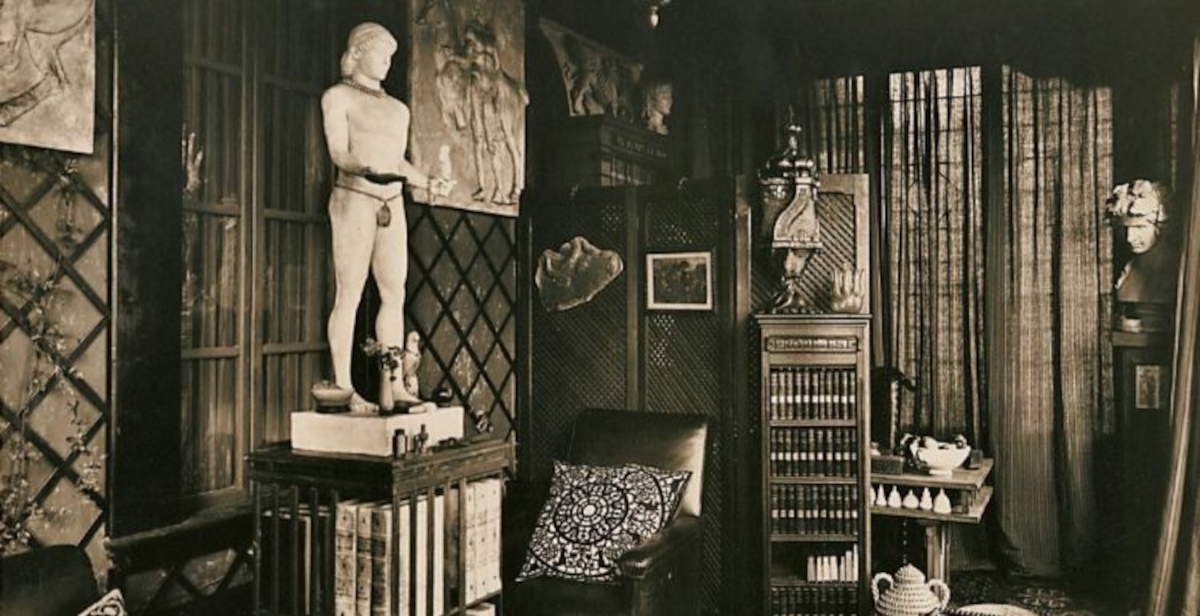Coming to bookstores on July 18, published by Skira and edited by Valerio Terraroli, Gabriele d’Annunzio’s Il Vittoriale degli Italiani in the photographs of Dante Bravo (1925-1931), a volume that collects and presents for the first time in unabridged form about 180 vintage photographic prints made between the mid-1920s and the early 1930s. It is an extensive visual repertoire documenting the construction phases of the monumental complex in Gardone Riviera, on Lake Garda, desired and inhabited by Gabriele d’Annunzio.
The images, taken by Dante Bravo, a photographer officially commissioned between 1925 and 1931, render the evolution of the construction site that transformed a villa on the hills of Lake Garda into a veritable “Citadel of Memory.” The Vittoriale was conceived by the poet-soldier as a great monument dedicated not only to Italian victories in World War I, but also to his personal war exploits and the celebration of his own existence. Bravo followed and documented the work for six years, leaving behind a photographic fund that, despite losses and dispersions, still makes it possible today to clearly analyze the construction phases and the most emblematic interiors.

The prints presented in the volume, survivors of a larger production and now published in their entirety for the first time, are organized in a visual itinerary designed to guide the reader within a complex artistic and symbolic project that blends architecture, literature, memory and autobiography. The Vittoriale, more than just a living or celebratory place, is in fact configured as the last total work of art created by d’Annunzio, in which every element, from furnishings to objects, from sculptures to gardens, is loaded with symbolic, mythological and cultural references.
In addition to photographs of the exterior works and architectural structures under construction, the volume includes a selection of shots depicting some of the most importantis and lesser-known interiors to the general public. These include Gasparo’s Camerata, Leda’s room, the Cenacolo (also known as the Relics room) and Cheli’s room. The images show the spaces as they are set up, offering a close look at the compositional and decorative choices that d’Annunzio oversaw in every detail. Each room is thus revealed to be part of a narrative and symbolic discourse that the author orchestrated to construct a posthumous identity, interweaving personal memory and patriotic ideology.

The introduction to the volume, written by Valerio Terraroli himself, offers an articulate analysis of the Vittoriale complex, dwelling on both architectural aspects and decorative elements and interior arrangements. The essay reconstructs the historical and cultural context within which d’Annunzio conceived the Vittoriale, illustrating the sources of inspiration, the aesthetic and symbolic models adopted, as well as the way in which the poet imposed his own taste on each individual element of the complex. Terraroli’s contribution also dwells on the relationship between the Vittoriale and the public and private figure of d’Annunzio, emphasizing the ambivalent nature of his choice of retreat: a voluntary isolation that nevertheless maintained a very strong scenic and political charge.
During the seventeen years he spent at the Vittoriale, d’Annunzio lived in what he described as "a wild and refined solitude, miserable and opulent, where passions blaze incessantly rekindled." This description, which condenses the tension between aesthetic pomp and existential restlessness, is also reflected in the images chosen for the volume, in which the monumentality of the spaces and the attention to detail coexist with a sense of suspension and isolation. Dante Bravo’s photographs, far from constituting mere technical documentation, thus take on a historical and narrative value, offering a visual record of the construction not only of a building, but of a personal myth.

Skira’s publishing project thus makes it possible to recover an overview of a little-investigated period in d’Annunzio’s life, while restoring the complexity of an architectural work that represents a unique case in twentieth-century Italian culture. The photographic collection does not merely illustrate a moment in the country’s architectural history, but takes the form of a tool for reflection on the public representation of memory, the relationship between aesthetics and ideology, and the role of the artist as the architect of his own posthumous destiny.
 |
| Unpublished photographs of the Vittoriale: D'Annunzio's house in Dante Bravo's book |
Warning: the translation into English of the original Italian article was created using automatic tools. We undertake to review all articles, but we do not guarantee the total absence of inaccuracies in the translation due to the program. You can find the original by clicking on the ITA button. If you find any mistake,please contact us.